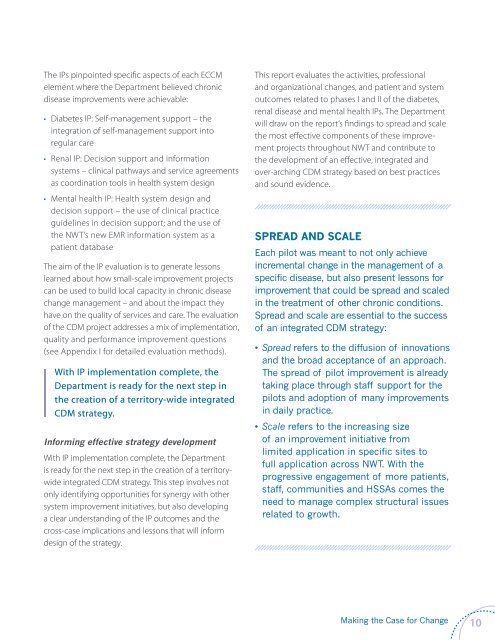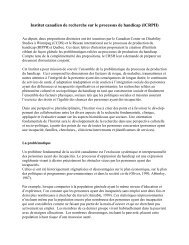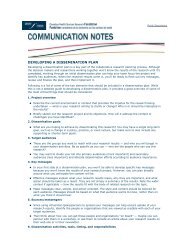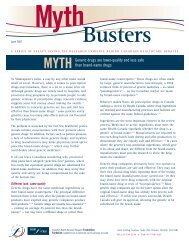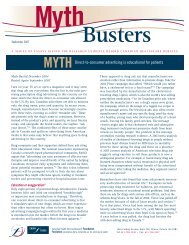Full Report
Full Report
Full Report
Create successful ePaper yourself
Turn your PDF publications into a flip-book with our unique Google optimized e-Paper software.
The IPs pinpointed specific aspects of each ECCM<br />
element where the Department believed chronic<br />
disease improvements were achievable:<br />
• Diabetes IP: Self-management support – the<br />
integration of self-management support into<br />
regular care<br />
• Renal IP: Decision support and information<br />
systems – clinical pathways and service agreements<br />
as coordination tools in health system design<br />
• Mental health IP: Health system design and<br />
decision support – the use of clinical practice<br />
guidelines in decision support; and the use of<br />
the NWT’s new EMR information system as a<br />
patient database<br />
The aim of the IP evaluation is to generate lessons<br />
learned about how small-scale improvement projects<br />
can be used to build local capacity in chronic disease<br />
change management – and about the impact they<br />
have on the quality of services and care. The evaluation<br />
of the CDM project addresses a mix of implementation,<br />
quality and performance improvement questions<br />
(see Appendix I for detailed evaluation methods).<br />
With IP implementation complete, the<br />
Department is ready for the next step in<br />
the creation of a territory-wide integrated<br />
CDM strategy.<br />
Informing effective strategy development<br />
With IP implementation complete, the Department<br />
is ready for the next step in the creation of a territorywide<br />
integrated CDM strategy. This step involves not<br />
only identifying opportunities for synergy with other<br />
system improvement initiatives, but also developing<br />
a clear understanding of the IP outcomes and the<br />
cross-case implications and lessons that will inform<br />
design of the strategy.<br />
This report evaluates the activities, professional<br />
and organizational changes, and patient and system<br />
outcomes related to phases I and II of the diabetes,<br />
renal disease and mental health IPs. The Department<br />
will draw on the report’s findings to spread and scale<br />
the most effective components of these improvement<br />
projects throughout NWT and contribute to<br />
the development of an effective, integrated and<br />
over-arching CDM strategy based on best practices<br />
and sound evidence.<br />
Spread and scale<br />
Each pilot was meant to not only achieve<br />
incremental change in the management of a<br />
specific disease, but also present lessons for<br />
improvement that could be spread and scaled<br />
in the treatment of other chronic conditions.<br />
Spread and scale are essential to the success<br />
of an integrated CDM strategy:<br />
• Spread refers to the diffusion of innovations<br />
and the broad acceptance of an approach.<br />
The spread of pilot improvement is already<br />
taking place through staff support for the<br />
pilots and adoption of many improvements<br />
in daily practice.<br />
• Scale refers to the increasing size<br />
of an improvement initiative from<br />
limited application in specific sites to<br />
full application across NWT. With the<br />
progressive engagement of more patients,<br />
staff, communities and HSSAs comes the<br />
need to manage complex structural issues<br />
related to growth.<br />
Making the Case for Change<br />
10


